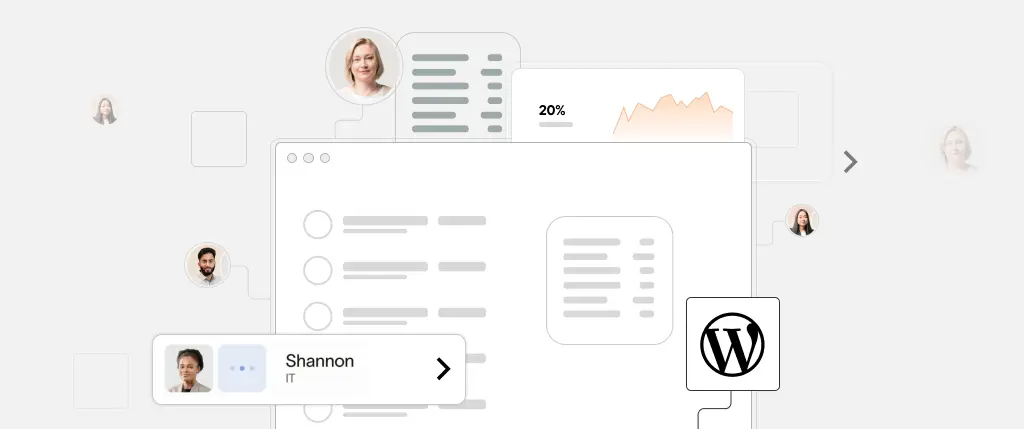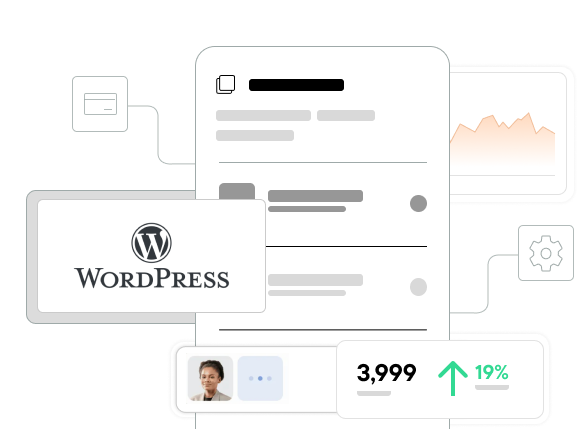In today’s digital landscape, the performance and reliability of your WordPress website are just as important as content and design. Broken features, slow loading times, or server outages can quickly lead to lost visitors and SEO penalties. That’s why Monitoring and Observability in WordPress are essential for anyone managing or developing a WordPress site.
While “monitoring” tells you when something is wrong, “observability” helps you understand why. Together, they offer a robust approach to debugging, optimizing, and maintaining high-performance WordPress platforms.
This guide will explore core concepts, show practical code examples, and walk you through essential tools and best practices to improve your site’s reliability.
What Are Monitoring and Observability in WordPress?
Monitoring vs. Observability
- Monitoring: The practice of collecting predefined metrics—like uptime, CPU usage, and response times—to detect known issues.
- Observability: The ability to investigate unknown problems using logs, traces, and contextual data to determine the root cause.
Monitoring gives you alerts. Observability gives you answers.
Why You Need It
WordPress is a flexible platform, but it comes with complexity:
- Themes and plugins add overhead
- PHP and MySQL are prone to performance bottlenecks
- Hosting environments vary widely
Without proactive monitoring, issues like memory leaks, database slowdowns, or API failures can go undetected—until your users complain.
Core Concepts
1. Metrics: What to Track in WordPress
Key metrics to monitor:
- Uptime: Detect site outages instantly.
- Time to First Byte (TTFB): A key performance indicator influenced by server and PHP execution.
- Memory Usage: Spot plugins or themes that use excessive RAM.
- Database Queries: Monitor for slow or duplicate queries.
- Page Load Time: Measure overall front-end performance.
2. Logs: What’s Happening Behind the Scenes?
Logs are detailed records that help you troubleshoot issues. Common WordPress logs include:
- PHP errors and warnings
- Plugin and theme conflicts
- Cron job failures
- Custom application-level events (e.g., payment failures, user actions)
Enabling Logging in WordPress
In wp-config.php:
define('WP_DEBUG', true);
define('WP_DEBUG_LOG', true);
define('WP_DEBUG_DISPLAY', false); // Prevent public displayThis stores logs in /wp-content/debug.log.
Custom Logging
You can write your own logs:
error_log('New user registered at ' . current_time('mysql'));Or store logs in a custom file:
file_put_contents(ABSPATH . 'my-custom.log', "User login\n", FILE_APPEND);3. Alerts: Stay Proactive, Not Reactive
Set alerts for key conditions like:
- Uptime < 99.9%
- Server response time > 3 seconds
- Spike in 500 errors
- Specific log keywords (e.g., “fatal” or “timeout”)
You can send alerts via:
- Email (e.g., WP Mail SMTP)
- Slack (using webhook integrations)
- SMS/webhooks (with services like Better Uptime, Pingdom, or Datadog)
Advanced Monitoring for Developers
Database Observability
Use tools like Query Monitor to:
- Inspect SQL queries by page or plugin
- Track slow queries
- Find repeated database calls
Performance Tracing with New Relic
- Visualize PHP transaction times
- Trace third-party plugin bottlenecks
- Integrate with WordPress hooks
Log Aggregation and External Monitoring Tools
Consider third-party services:
- Sentry – Error tracking with context and stack traces
- Loggly – Centralized log management
- Datadog – Full observability suite for metrics, logs, traces
Sample Code Snippets
Log Failed API Request
$response = wp_remote_get('https://api.example.com/data');
if (is_wp_error($response)) {
error_log('API Error: ' . $response->get_error_message());
}Track Post Publication
add_action('publish_post', function($post_id) {
$title = get_the_title($post_id);
error_log("Post published: $title (ID: $post_id)");
});Email Alert on PHP Error
set_error_handler(function($errno, $errstr, $errfile, $errline) {
$msg = "$errstr in $errfile on line $errline";
mail('[email protected]', 'WP Error Alert', $msg);
});Best Practices
- Log selectively: Don’t clutter logs with every action.
- Secure logs: Place log files outside the public root and restrict access.
- Rotate logs: Use cron jobs or log rotation tools to avoid bloat.
- Set actionable alerts: Avoid alert fatigue by focusing on critical events.
- Monitor frontend and backend separately: Track both user experience and server performance.
Conclusion
Monitoring and Observability in WordPress help you catch problems before your users do. By combining tools, metrics, and logs with a smart alerting system, you gain visibility into your entire stack.
Whether you’re a developer, agency, or site owner, adopting observability practices can:
- Improve uptime and page speed
- Reduce debugging time
- Boost user satisfaction and SEO performance
How Sitebox Helps with WordPress Monitoring
Sitebox simplifies monitoring for modern WordPress setups, especially in headless or hybrid architectures. With Sitebox, you get:
✅ Real-time monitoring for APIs and deployment status
📊 Performance dashboards for pages and endpoints
📬 Integrated alerting via Slack, webhook, or email
🧠 Contextual logging grouped by user action, region, or environment
Sitebox gives you one place to monitor content, commerce, and code—without the usual DevOps burden.
👉 Learn more about Sitebox monitoring tools




